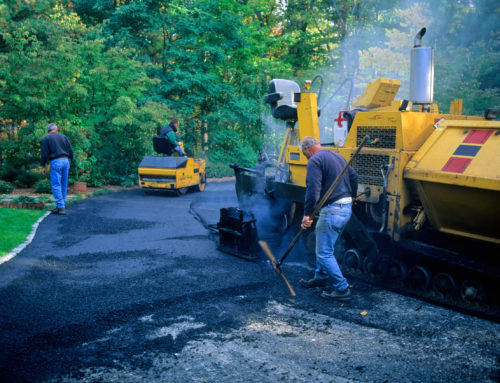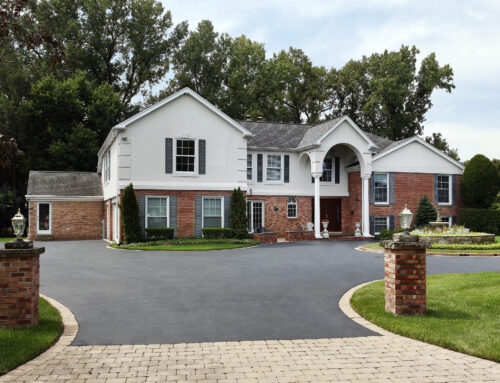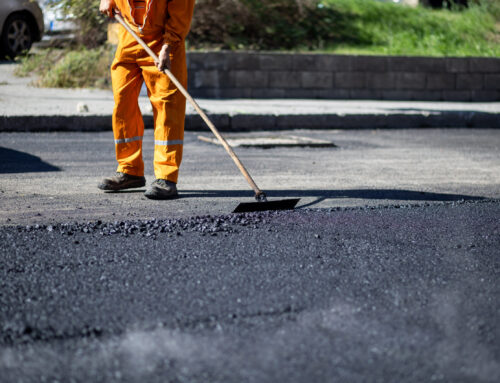 We don’t often think about the long stretches of asphalt that line our driveways and the care that they need until we start to see the wear that comes from driving on it day after day. As more cracks and chips come along, we start to wonder what steps we should take and what can be done to prevent any other damage and fix what has already been done. When it comes to repairing your driveway, no matter what it is made of, there are a few paths that you can take. Driveway resurfacing, patching, and replacement are all options when it comes to getting your driveway back in shape. The decision on which to choose takes several factors into consideration, here we’ll breakdown what each one is and what you should consider before finding a contractor.
We don’t often think about the long stretches of asphalt that line our driveways and the care that they need until we start to see the wear that comes from driving on it day after day. As more cracks and chips come along, we start to wonder what steps we should take and what can be done to prevent any other damage and fix what has already been done. When it comes to repairing your driveway, no matter what it is made of, there are a few paths that you can take. Driveway resurfacing, patching, and replacement are all options when it comes to getting your driveway back in shape. The decision on which to choose takes several factors into consideration, here we’ll breakdown what each one is and what you should consider before finding a contractor.
Driveway Resurfacing
Driveway resurfacing is a good middle ground between constant patching cracks and replacing the driveway entirely. Resurfacing is when the top layer of asphalt is covered by a new layer without removing any of what is underneath. This method is unlike patching certain spots in that it covers the entire driveway with a brand new layer, sealing off any of the cracks that might have been underneath. Resurfacing also takes less time and money than replacing the entire driveway but still offers that fresh, smooth, new driveway look.
When should you consider driveway resurfacing? Potholes, alligator cracks, unevenness, and the age of your driveway are factors to consider when looking into driveway resurfacing. Always remember, resurfacing won’t be effective if there is damage below the top layer of the driveway. To resolve that issue you’ll want to look into replacing your driveway.
Driveway Patching
Over time, your driveway will experience regular wear and tear from the weather as well as its constant use. From this exposure, you will start to see small chips or cracks. These minor signs are the exact condition that calls for patching. As long as the cracks are less than a quarter-inch wide and don’t show signs of any deeper damage, simply patching the area can be an effective, although temporary, solution to your driveway problems. These fixes are usually only temporary because water will still be able to seep into the spaces, freeze and expand, and then cause more damage to your driveway. Patching your driveway will extend the life of your road a little while before it needs to be replaced but it will also leave your driveway looking off as the patched areas can stand out from the older asphalt.
When is patching your driveway the best method? Typically when you notice any small cracks or chips that don’t show any more serious signs of damage. This method is also ideal for those that may want to do the repairs themselves to try and save a little bit of money.
Driveway Replacement
Replacing your driveway isn’t something that we often think needs to be done until we actually notice the damage to it. Replacing your driveway typically ends up being more expensive than the other options in this post as the entire thing will need to be redone down to the foundation. Although it is the more expensive option, starting with a fresh foundation offers you a new lifespan on your driveway. Depending on the climate, usage, and how well it is maintained, an asphalt driveway can last anywhere from 12 to 20 years.
When is the right time to replace your driveway? Similar to resurfacing, you may want to replace your driveway once you start to notice some of the same kinds of damage. Larger or alligator cracks, potholes, surface stains from oil that you just can’t get out, damage that goes deeper than the surface layer, or any signs that show damage to the foundation of your driveway are all reasons to look into replacing your driveway.
Whether you’re looking for driveway resurfacing, patching up those pesky cracks, or replacing your asphalt driveway altogether, Sunrise Asphalt is here to help! If you’re looking to have work done on your asphalt driveway contact us and we’ll be happy to work with you on your project.




